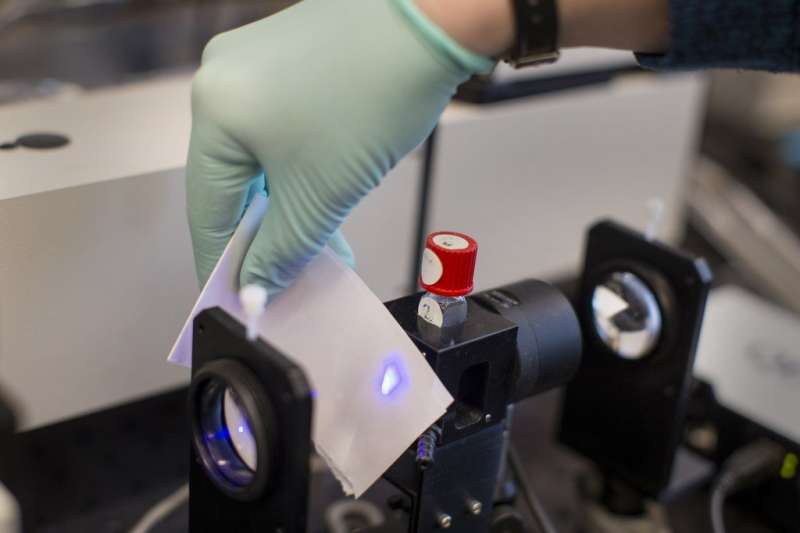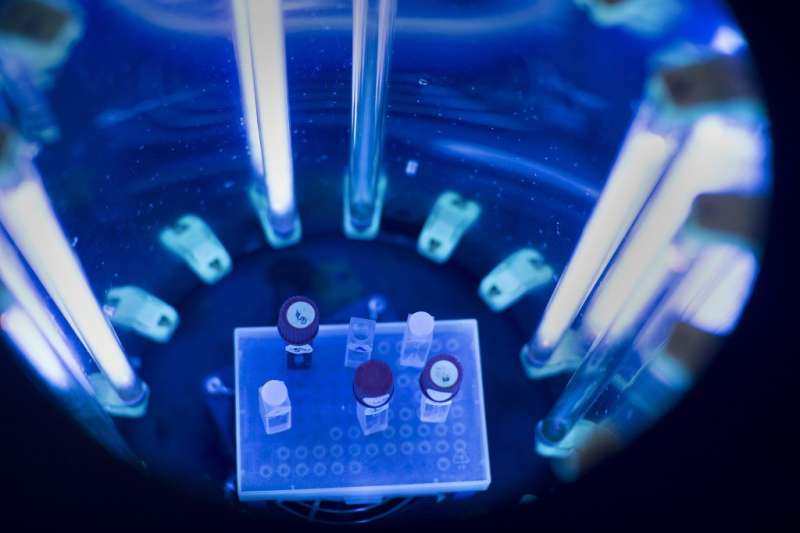Researchers show role for cyanide in origins of life

It sounds odd, but cyanide may have been a key ingredient in the origins of life.
That's the finding of graduate student Zoe Todd and Dimitar Sasselov, the Phillips Professor of Astronomy and director of the Harvard Origins of Life Initiative, who showed that a mixture of cyanide and copper, when irradiated with UV light, could have produced simple sugars that formed the building blocks of life on early Earth. The study is described in a paper in the Royal Society of Chemistry.
"One story for the origin of life is what we call the RNA world," Todd said. "In order to make something like an RNA nucleotide, you need these sugars. This shows that process was plausible on the early Earth."
A key step in showing that the hypothesis was plausible came in 2012, when a team of scientists in the U.K. demonstrated that the system could produce simple sugars such as glycolaldehyde and glyceraldehyde.
Though groundbreaking, those tests were performed under ideal conditions—with relatively high concentrations of both cyanide and copper, and powerful lamps that generated high-energy, 254-nanometer wavelength light.

"You can get that wavelength with a simple mercury-emission lamp," Todd said. "They used them because they're a cheap, easy, powerful light source."
But past work from Sasselov's group had shown that early Earth would have experienced a range of wavelengths shorter than typical on the planet's surface today, so Todd and Sasselov set out to test the system under those conditions.
"We said, 'It's wonderful that this system works, but would it actually work in the environment of the early Earth?'" Todd said. "Our main goal was to test how dependent this was on wavelength.
"Also, because we used less light, we had to scale down the concentration of the solution as well. And we were able to show that it works, in some cases, more efficiently than the original experiment."
Todd, Sasselov, and co-authors combined small amounts of cyanide and copper in an airtight quartz container—UV light can penetrate quartz—and then hit the solution with lower-intensity light from tunable xenon lamps. Using prisms, Todd was able to separate the light into different wavelengths, and target the system with a specific wavelength for hours at a time before running tests to confirm the reaction was actually taking place.
By adjusting the system based on specific conditions—which molecules are present in an atmosphere and intensity of the UV light produced by nearby stars—researchers could use the system to model whether the reaction could operate on other planets, Todd said.
More information: Zoe R. Todd et al. Solvated-electron production using cyanocuprates is compatible with the UV-environment on a Hadean–Archaean Earth, Chemical Communications (2018). DOI: 10.1039/c7cc07748c
Journal information: Chemical Communications
Provided by Harvard University

















